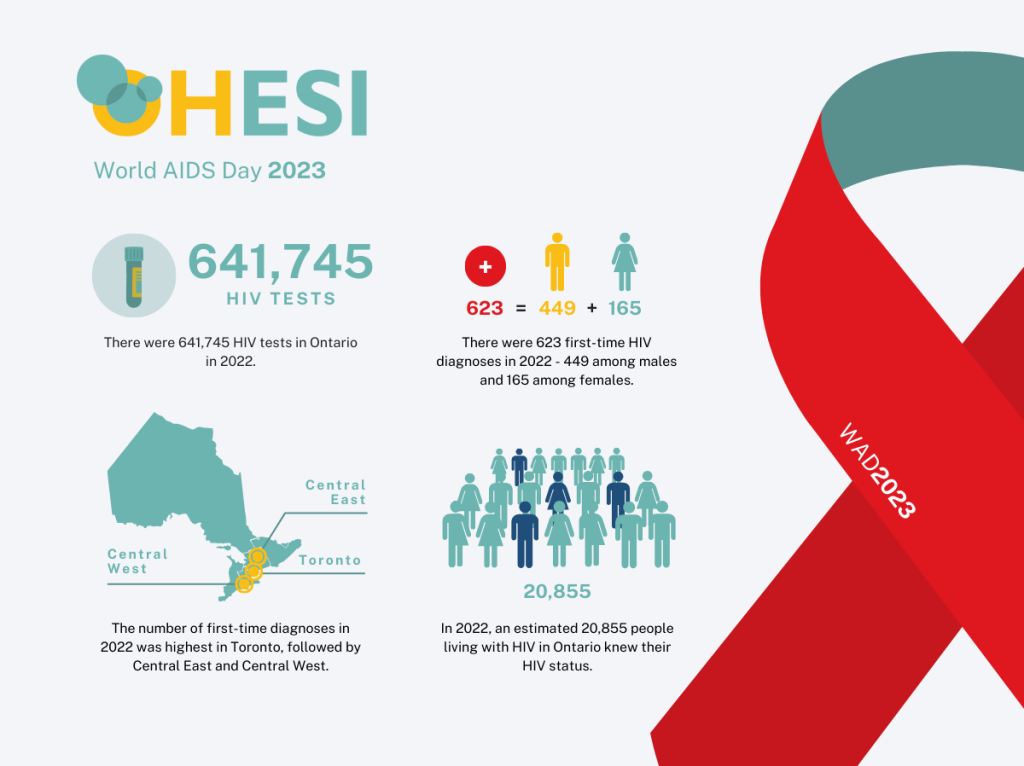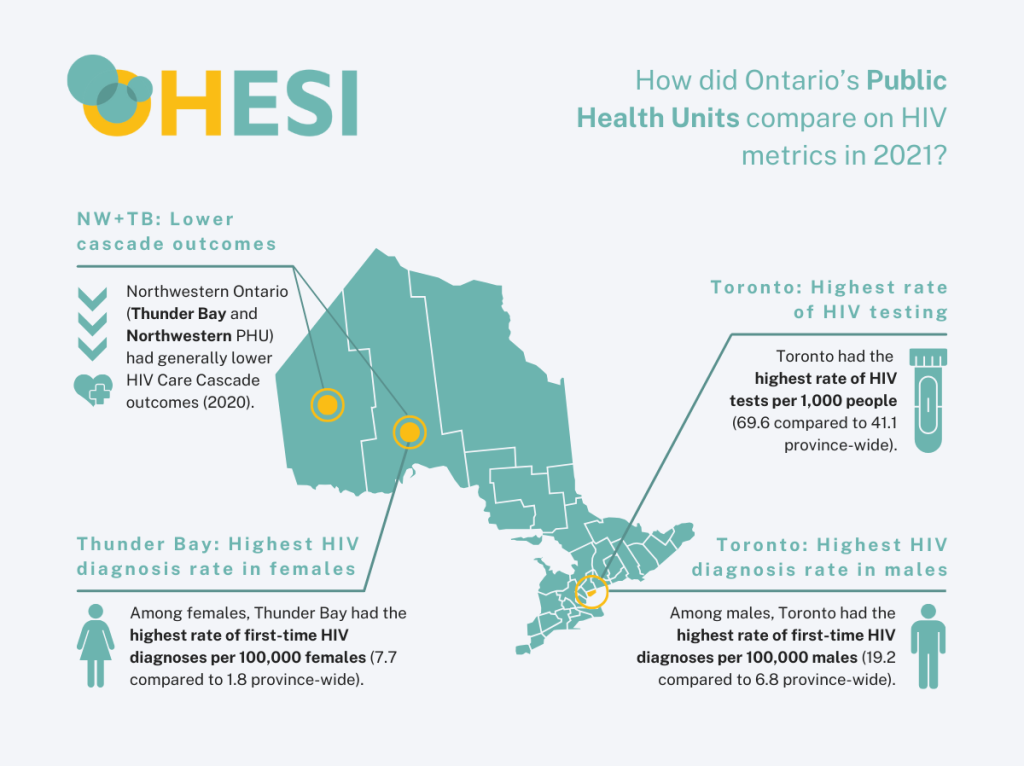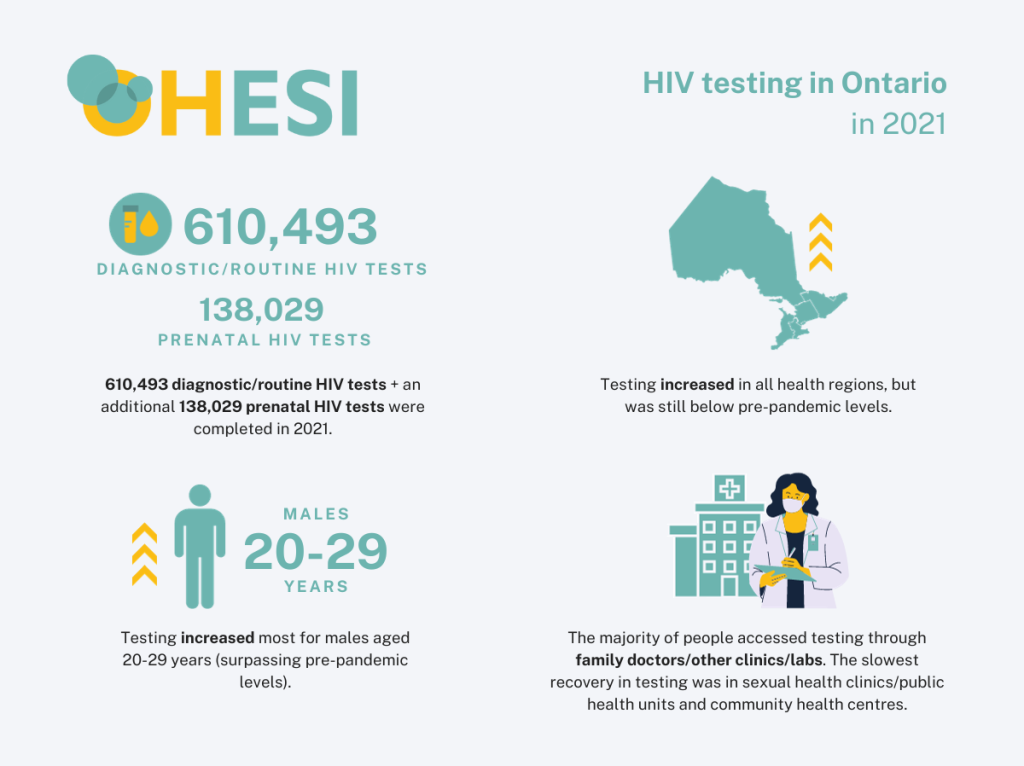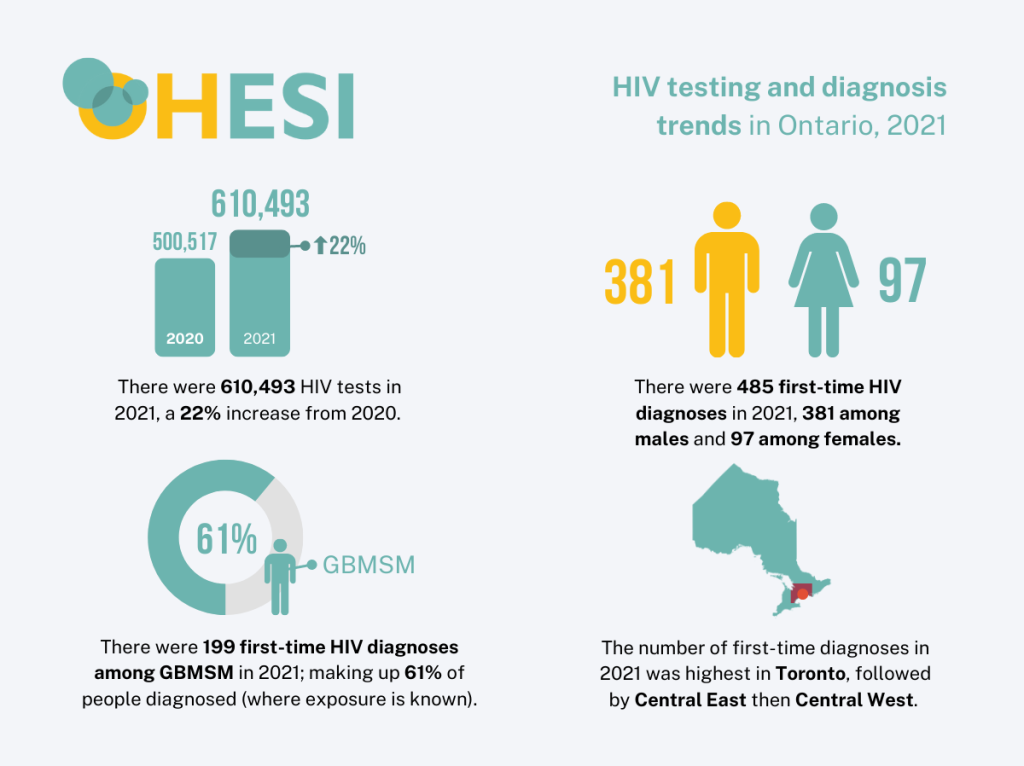Aug 30th, 2019
OHESI releases new report on HIV testing in Ontario 2017
The Ontario HIV Epidemiology and Surveillance Initiative (OHESI) is pleased to announce the release of a new report titled “HIV testing in Ontario, 2017”.
Reporting on HIV testing data in Ontario is critical to measuring our success in the HIV prevention, engagement and care cascade. A robust testing program ensures that high risk individuals receive regular HIV tests and that people who are living with HIV can learn their status and be linked to care. HIV testing is also an important gateway to services for people who are HIV-negative to be linked to prevention services. Trends in HIV testing can be useful for measuring the success of HIV testing initiatives.
In the 2017 HIV Testing Report, OHESI describes the trends in HIV testing in Ontario over the past decade (2008-2017), with a focus on HIV tests in 2017. The report includes analyses broken down by type of test (nominal, coded, and anonymous), sex, age, HIV exposure category, and geographic location (health regions), as well as information specific to rapid/point-of-care (POC) and prenatal HIV testing. Metrics described in the report include the number and percent of HIV tests, rates of HIV tests per 1,000 people, and HIV test positivity rates (i.e. the percent of HIV diagnostic tests with a confirmed HIV-positive result), among other analyses. For more information on HIV diagnoses in Ontario, please see the OHESI new report on HIV diagnoses in Ontario, 2017
Some of the key findings of the report:
- In 2017, there were 574,035 HIV tests in Ontario – equivalent to an HIV testing rate of 40.4 tests per 1,000 people.
- While the number of tests conducted remained relatively stable between 2008 and 2013, it increased by 29.9% between 2013 and 2017. The HIV testing rate per 1,000 people also increased by 24.1% during this time.
- In 2017, the vast majority of HIV tests (95.9%) – including POC tests – were nominal and the remainder were coded (1.6%) or anonymous (2.5%).
- In recent years, the number and rate of HIV tests were similar among males and females. In 2017, 50.1% of people tested were males and 49.9% were females. For the first time in 2017, the number of HIV tests among males was greater than the number of HIV tests among females.
- Between 2013 to 2017, the rate of HIV tests per 1,000 people was consistently highest in the 25 to 29 age category and increased for all age groups over time. Over this time period, the HIV testing rate per 1,000 people increased for all age groups by an average of 25%.
- Between 2013 and 2017, the percent of HIV tests in males attributed to men who have sex with men (MSM) increased from 23.7% to 30.9%.
- In 2017, the HIV testing rate per 1,000 people was highest in Toronto (68) followed by Ottawa (46). The number of HIV tests and the HIV testing rate increased between 2016 and 2017 in all health regions.
- Between 2013 and 2017, the number of point-of-care (POC) tests decreased by 31.7% from 29,362 to 20,068 through more targeted testing to priority populations, while the POC test positivity rate increased from 0.47% to 0.59%.
- Between 2013 and 2017, the estimated number of prenatal HIV tests was stable and the estimated proportion of women receiving prenatal laboratory testing who had an HIV test increased from 97.3% to 97.8%.
The information in this report can also be found in the Data and figures section of the OHESI website.
Stay tuned for future reports from OHESI!






